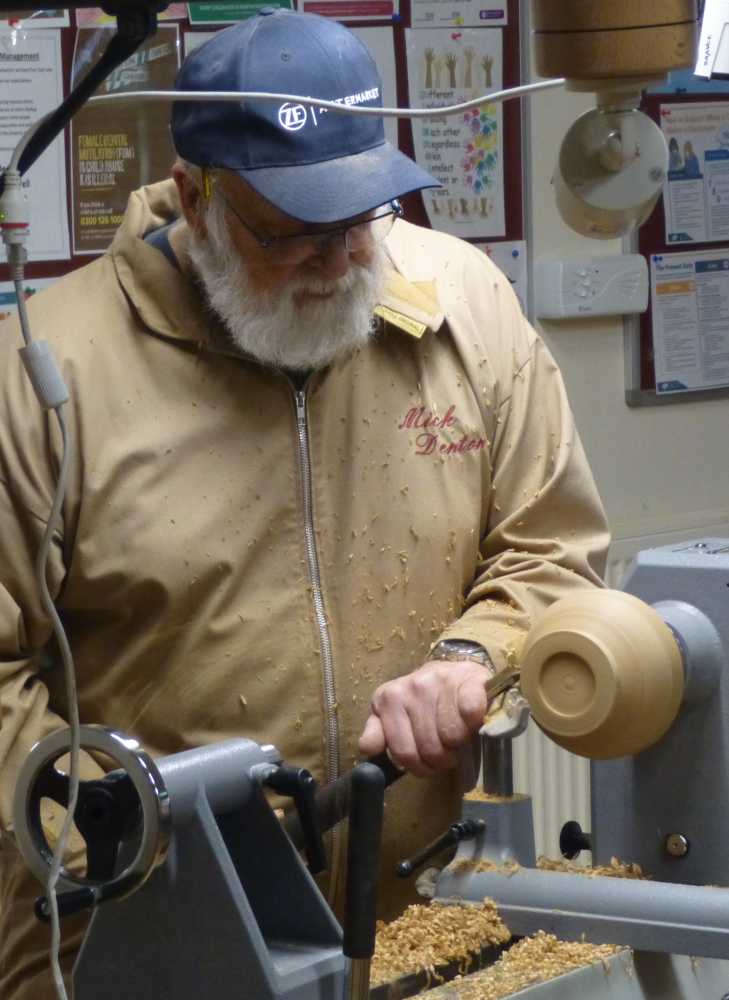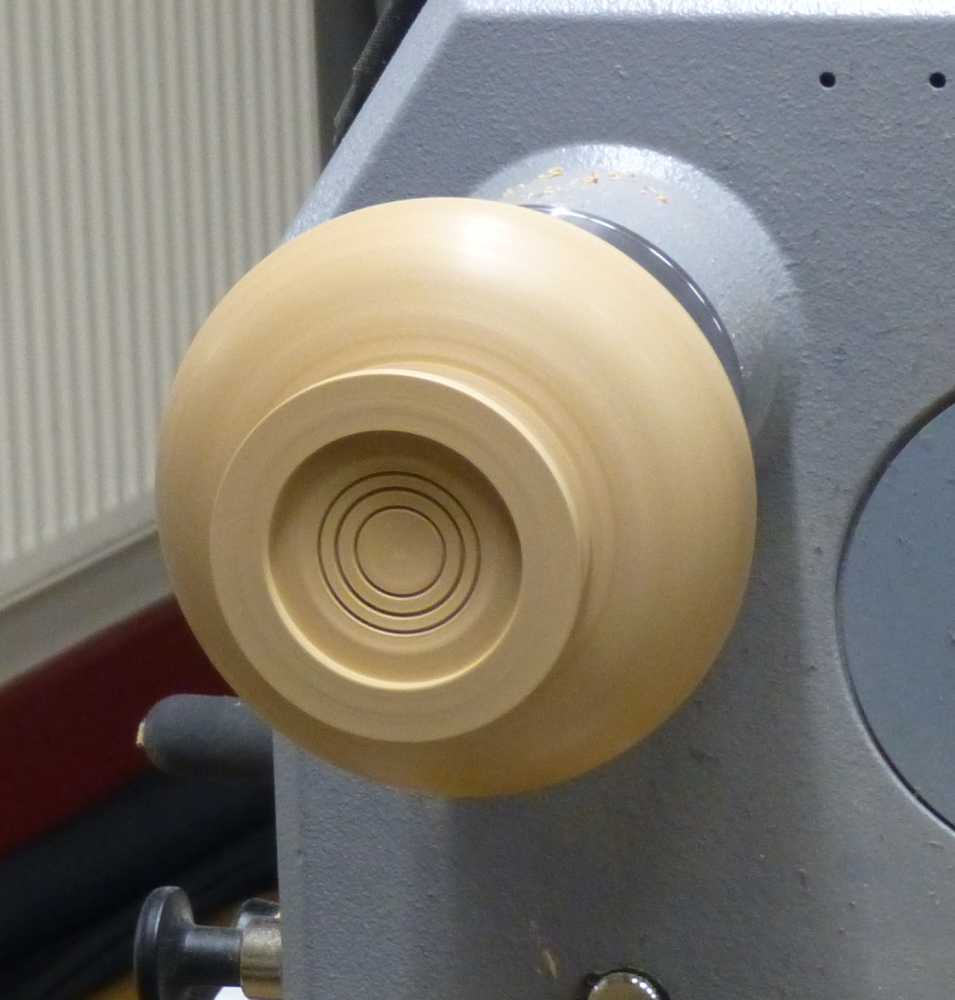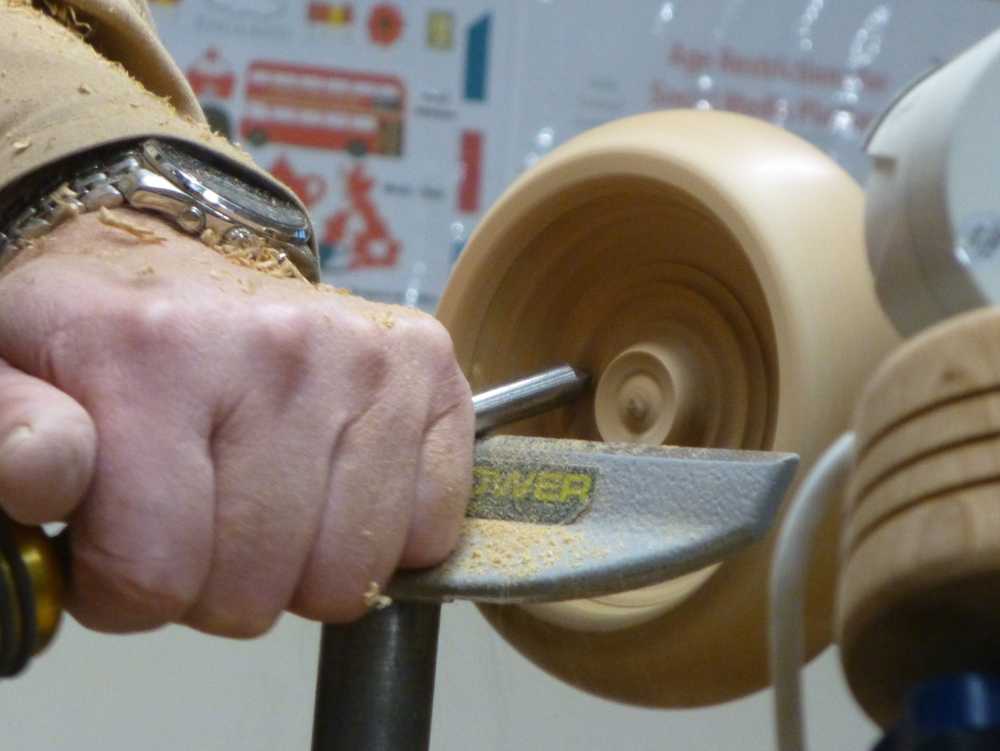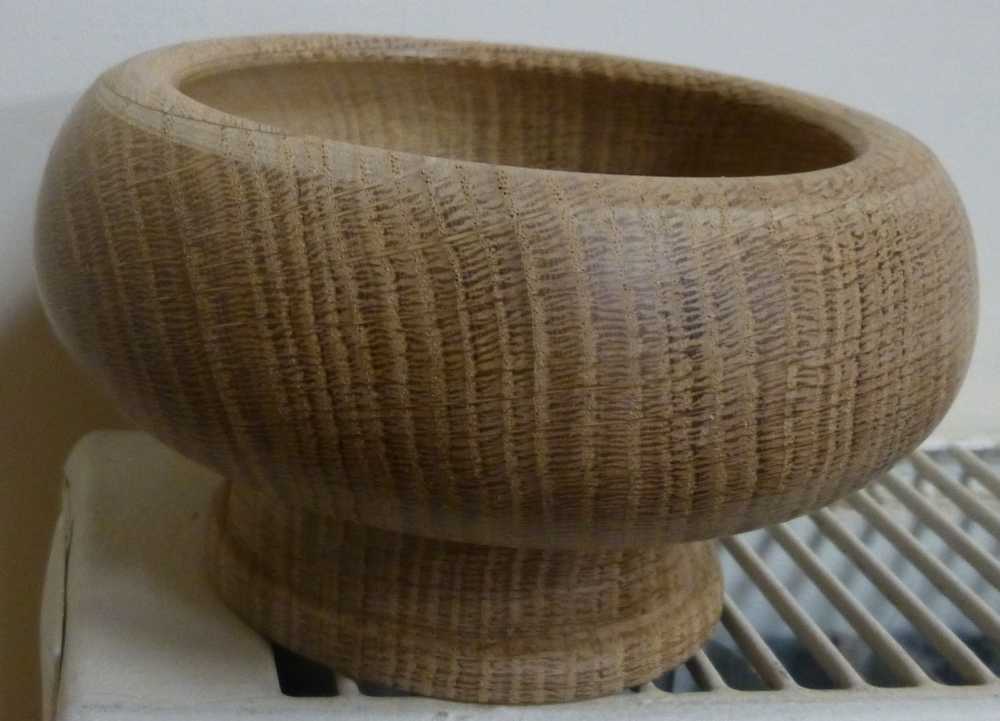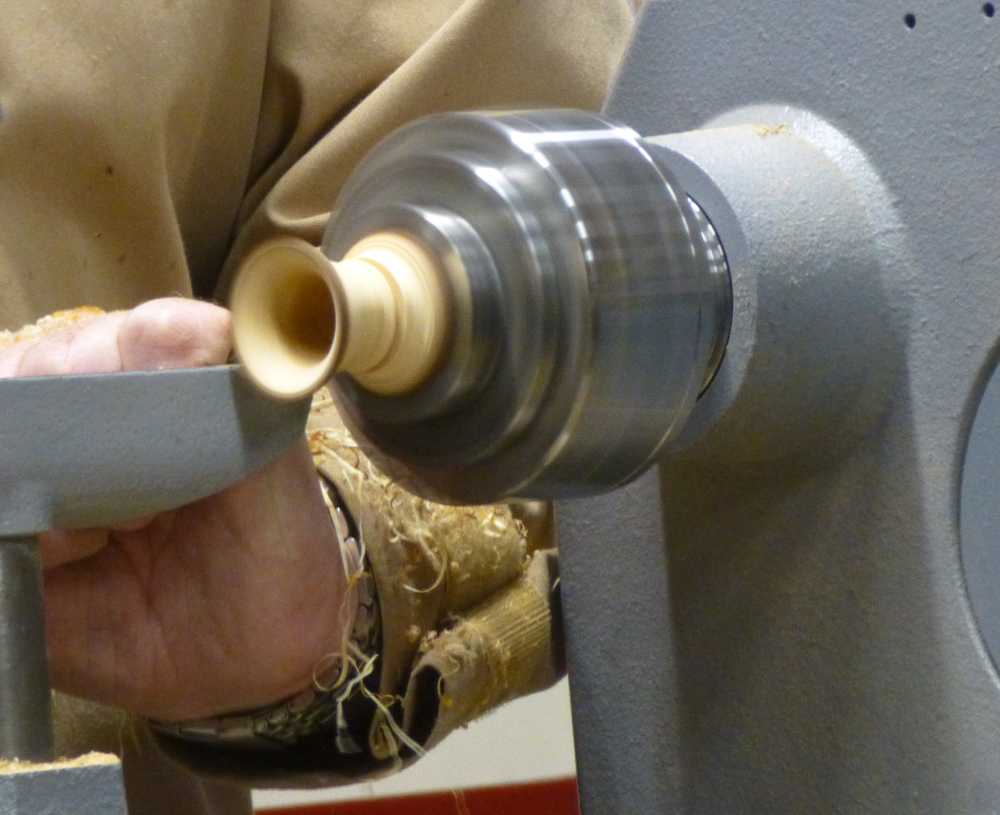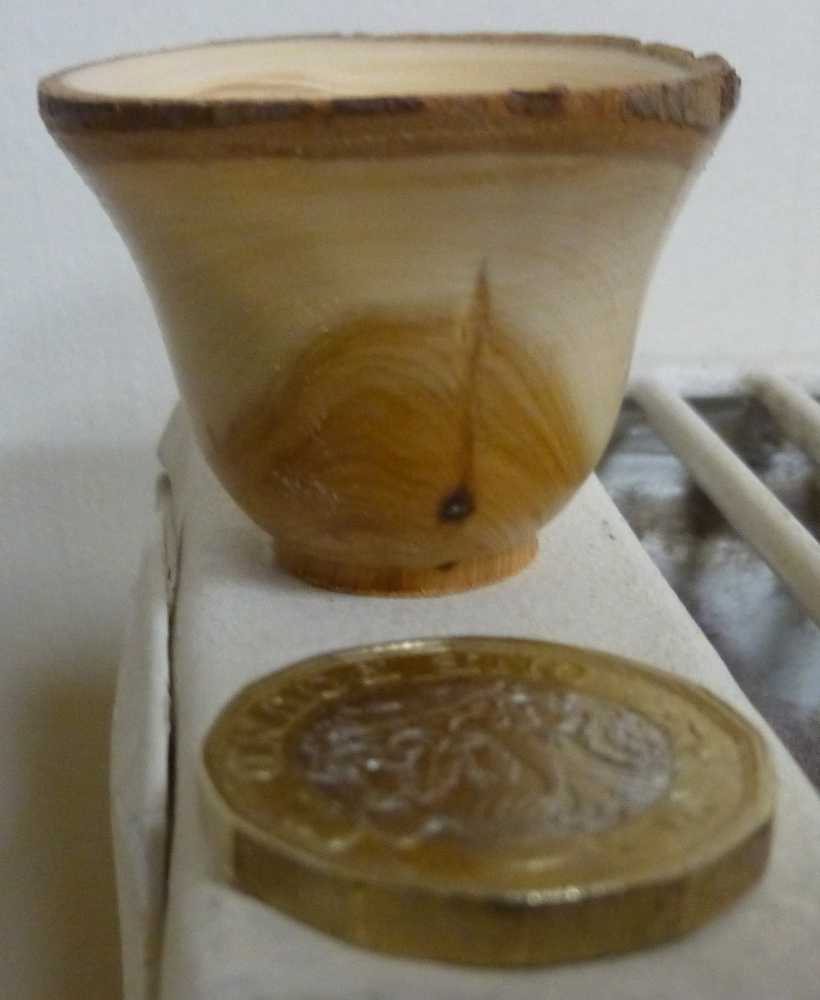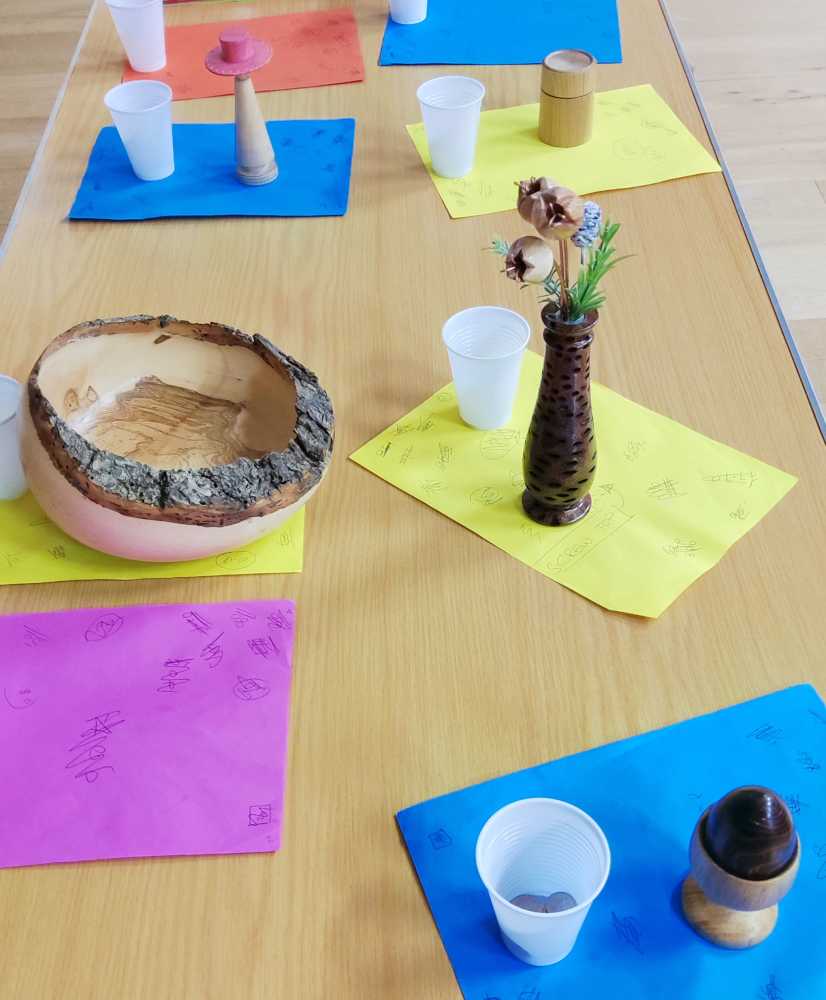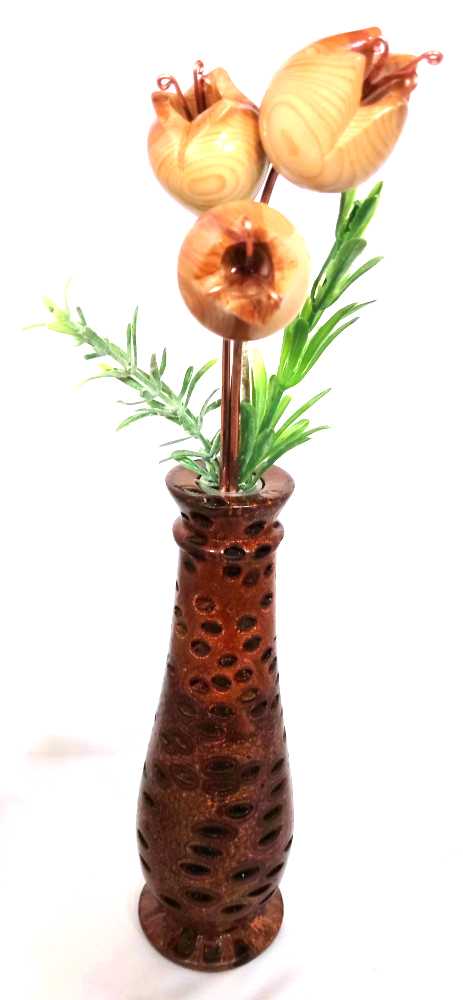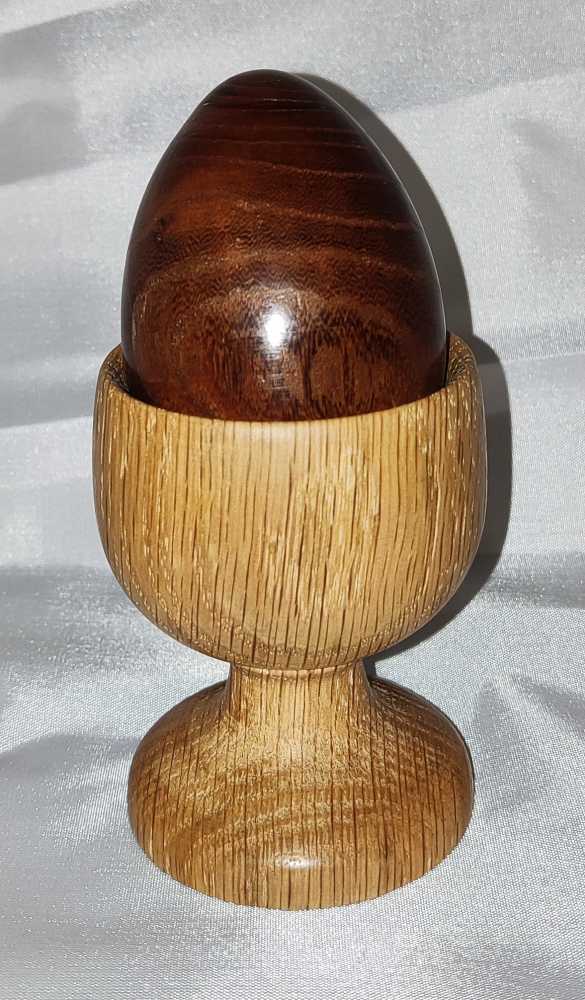This evening, Ken Garratt demonstrated making an egg-shaped box. For this, he used a sapele blank about 65mm diameter x 125mm length.
To start off, he mounted the blank between centres and put a chucking tenon on each end, after which he mounted it in the chuck.
Next, Ken marked the top and bottom of the box and the widest point of the body, this being one third of the overall length from the base.
He then made a groove to mark the lid and proceeded to shape the egg, before parting off the lid.
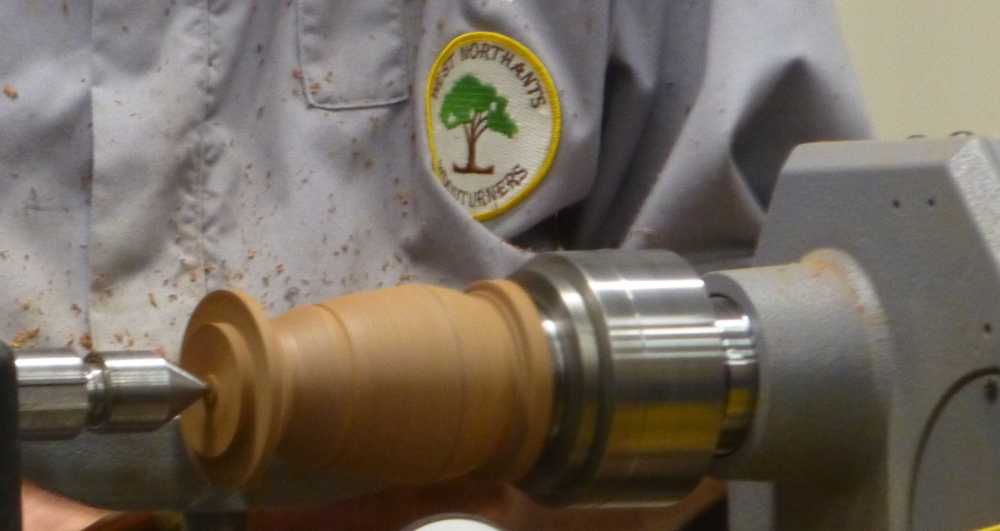
With the body still held in the chuck, Ken hollowed it out with a spindle gouge and refined it with a scraper. A mortice was formed in the body with the top edge slightly undercut to ensure a clean fit with the tenon.
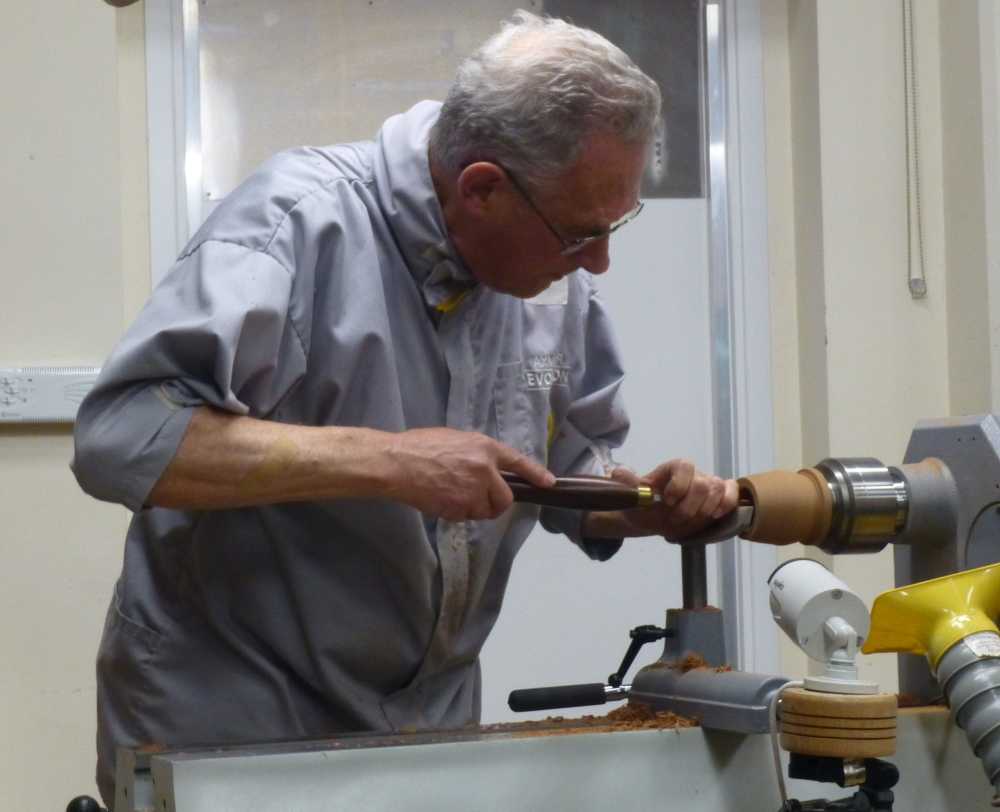
Sanding was carried out with the abrasives on a stick for safety, and taking care to avoid the mortice.
It was then dismounted from the chuck – but not before marking its position in the jaws so that it could be accurately re-mounted later on.
With the body out of the way, Ken mounted the lid in the chuck and hollowed it in a similar fashion to the body. Once this was done he made a tenon to fit the body mortice, bringing up the body repeatedly between very fine cuts in order to get the right fit. A very slight taper on the tenon can help this process, with a friction line on the taper establishing an accurate diameter to work to.
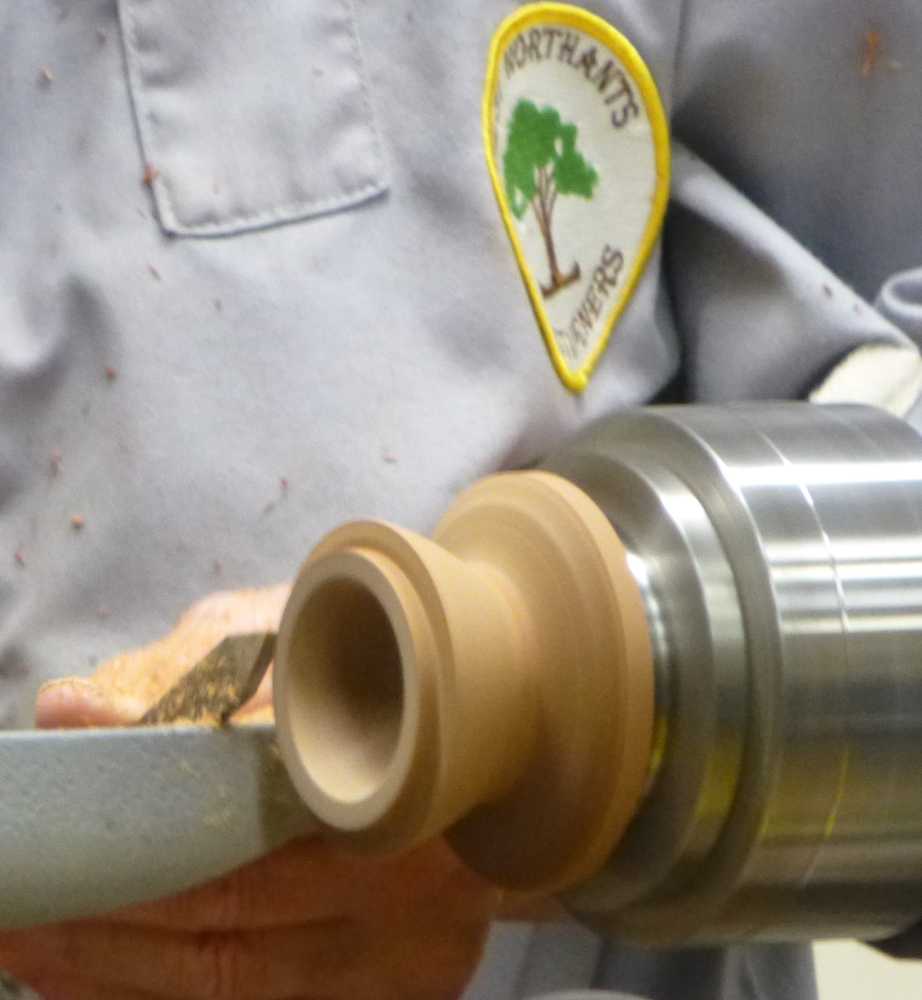
As there is no knob or other shape to grasp on the lid, the tenon must not be too tight or it will be very difficult to remove the lid. At this juncture, however, Ken left it just a bit tight and assembled the two pieces before refining the external profile of the two pieces together on the lathe.
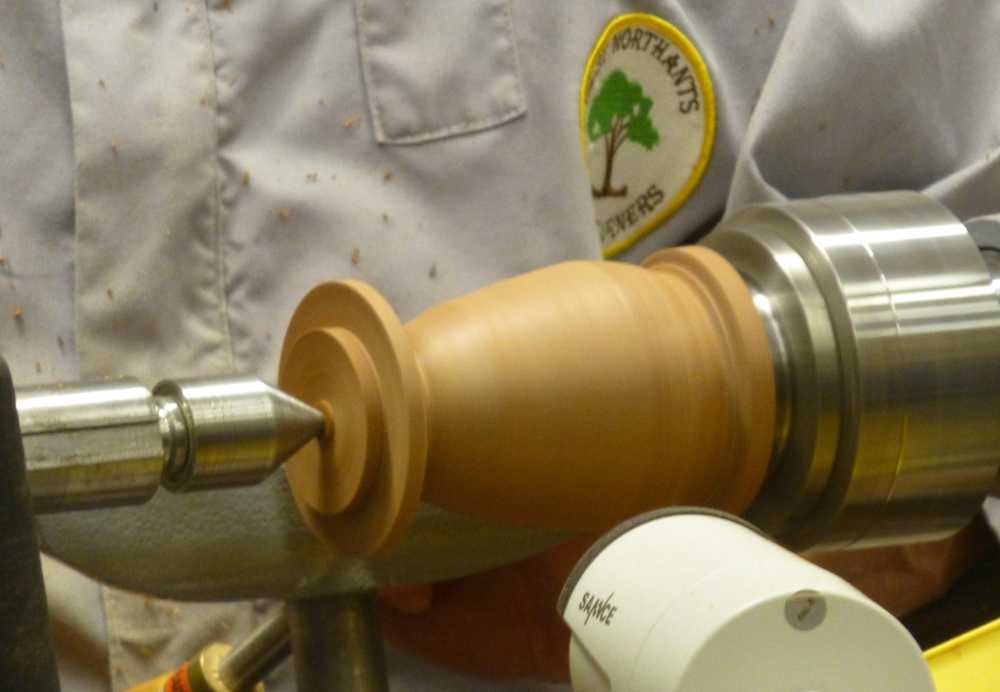
The box was sanded overall and the lid removed and Ken then made a shallow “shadow line” to act as guide to the lid position when opening the box. With the lid replaced on the box, he carried out final refinement of the shape and then parted the lid from its tenon at the tailstock end before tidying up the nub with a light touch of the gouge and some sanding. The lid was now finished and Ken put it to one side.
Ken now removed the box body and mounted a disc of wood in the chuck which he fashioned into a jam chuck to fit into the mortice.
With the tailstock brought up for support, he reduced the chucking tenon to a minimum and then shaped the bottom of the box, leaving some flats so that the box will stand up.
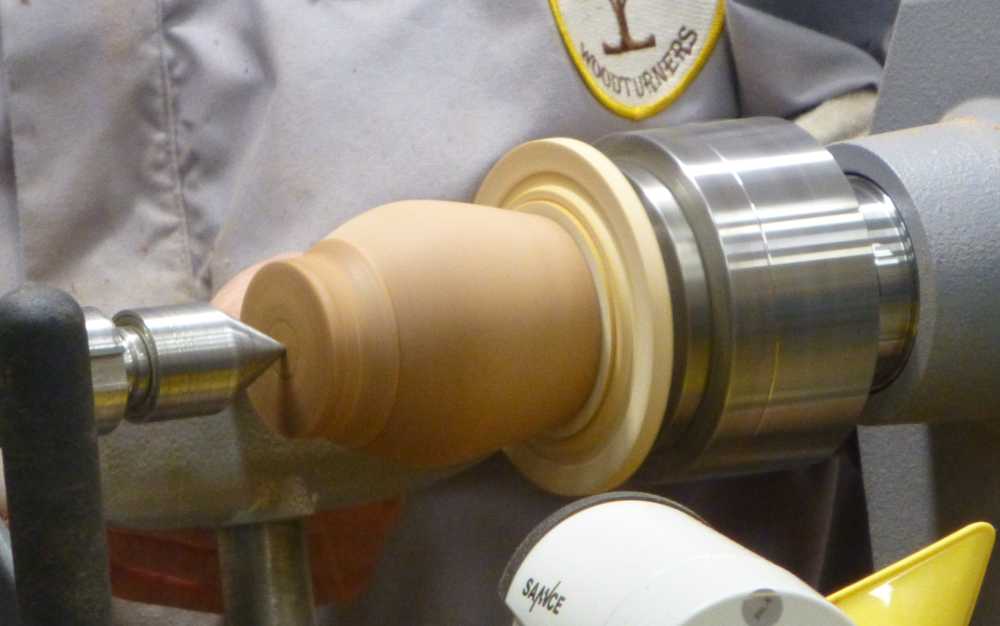
Finally, the box was parted off, the nub removed, the base sanded and the mortice checked for any marks left by the jam chuck.
Ken’s usual finish is Treatex hardwax oil, applied by bush and any surplus wiped off after about 15 minutes; this will give a pleasing satin finish. If left overnight, it can be buffed the following day for a shine. On this occasion he wiped it off a bit quicker than he would normally do and the box was left with a low satin finish.
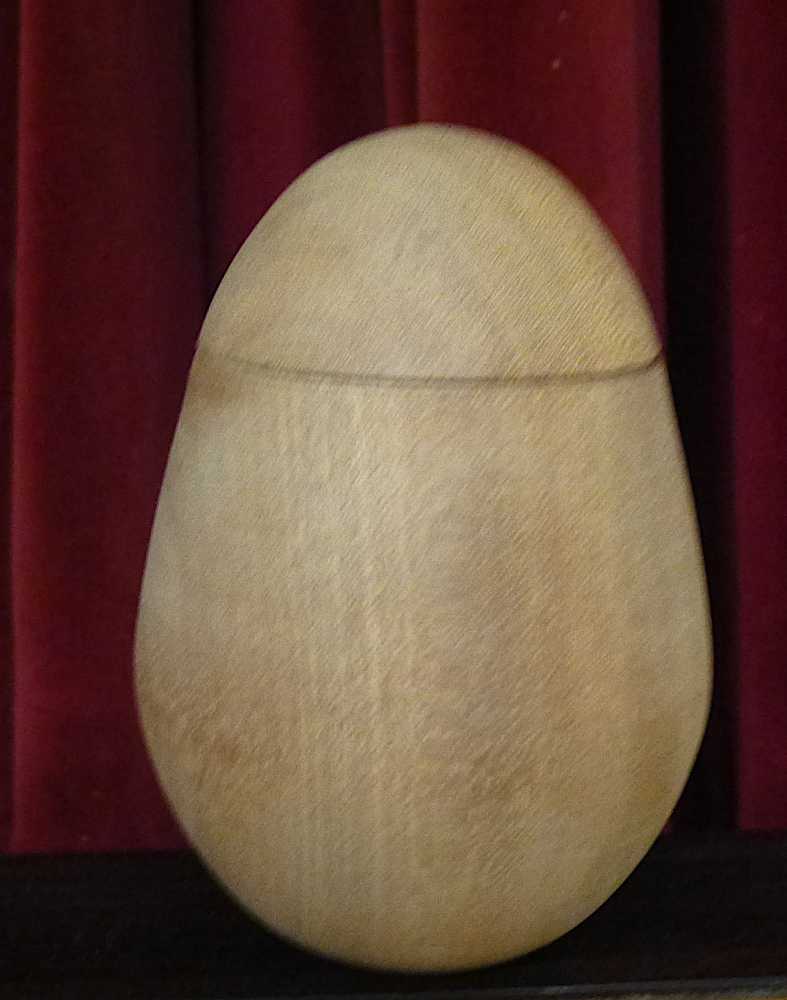
Apologies to Ken – I forgot to align the grain of the lid and box before taking the picture. They did indeed line up seamlessly!

